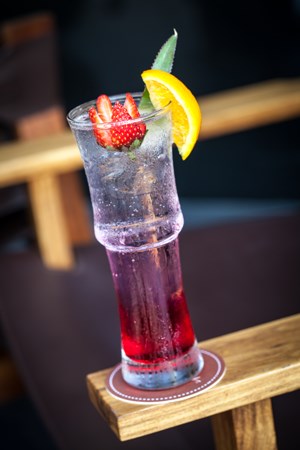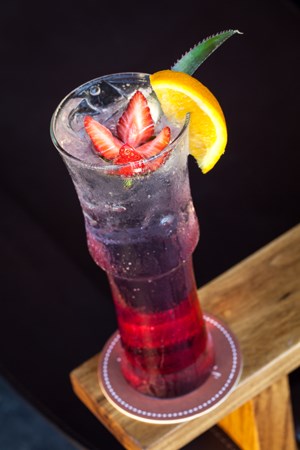
Did you know that there is no ginger in gin, but that its core ingredient is the juniper berry? The essential oils of the berry were first used to cure stomach complaints, gallstones and gout by apothecaries (chemist shops) in Holland in the early 17th century. The berries were added to the neutral-tasting spirit made from grain, and redistilled – to give gin its distinctive flavour.
Tonic – gin’s erstwhile partner on the cocktail menu – was also initially concocted to treat malaria. A key component of tonic water is quinine – an anti-malarial alkaloid derived from the bark of a South American cinchona tree. And don’t forget the slice of lime – for essential vitamin C. All very healthy!
The spirit is literally steeped in history… and the phrases ‘Dutch Courage’, ‘Mother’s Milk’, ‘Mother Gin’ and ‘Mother’s Ruin’ are actually bookmarks in the story of gin in society, beginning in the 1700s.
The affordability of the drink in the 18th century led to it becoming a firm favourite amongst the poor (the Gin Craze) and then a sharp increase in alcoholism in that sector of society; its popularity amongst women consumers led to the tags ‘Mother’s Milk’ and ‘Mother’s Ruin’. And it was the English who coined the phrase – Dutch Courage – alluding to gin.
Fierce competition between beer halls and gin palaces ensued in London when the latter started mushrooming throughout the city.
Fast forward to the present and cocktail menus feature gin in a multitude of variations and recipes. Some hip cities even have dedicated ‘gin bars’. Even though the usual gin brands are found in bottle stores everywhere, the current artisanal trend sees an increase in “craft gins” being produced on the local market. In the UK, the juniper berries are still picked by those who distil their own gin at home.
In South Africa, there are quite a few gin crafters taking the small industry to the next level and raking in impressive awards both locally and internationally (Wilderer Gin in the Cape) along the way! Local gin is also making inroads at local retailers and flying the South African flag on the global market.
South African gin crafters create their unique products by featuring indigenous ingredients in the mix. The local gins contain mountain and spring water from their specific region, infused with various combinations of fynbos botanicals, roots and spices (which include honeybush, buchu, rooibos, wild dagga and devil’s claw, cardamom and African ginger). Local is certainly lekker!

Someone once said, tongue-in-cheek, “I cook with gin. Sometimes I even put it in the food!” But in all seriousness, gin is a great ingredient to use in a citrus gin dressing for a grilled chicken salad or in the curing process for curing salmon. And nothing beats a layered gin-and-tonic flavoured vanilla sponge cake!
They also add an extra element to marinades, sauces, salads, venison and light desserts. For a refreshing cocktail with a difference, try out this recipe for a Raspberry Cocktail! Enjoy!
Recipe
Raspberry Botanical Recipe
50ml Inveroche Classic
25ml raspberry puree
25ml lemon juice
15ml sugar syrup (1:1)
Top – soda water
1 mint sprig
Method
Shake first four ingredients and strain over fresh ice in a tall glass. Top with soda and stir. Garnish with generous sprig of mint leaves
